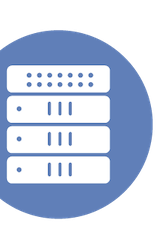Tech Field Day Coverage
Our delegate panel includes independent writers and thought leaders, and we collect their coverage of the event, Tech Field Day presentations, and sponsoring companies here.
Networking is Finally Catching Up
Phil Gervasi reflects on why servers have been managed programmatically for years, but not networks. From what he saw at Networking Field Day last month, that’s about to change. Phil cites Extreme Networks as standing out with providing a means for greater agility and efficiency in programming networks.
Read More:
Networking is Finally Catching Up
Swordfish – A Standard by Any Other Name Would Smell As Sweet
Alex Galbraith hear from SNIA last year at Storage Field Day, and takes a look at the Swordfish. This defines the standards for APIs used by storage devices to make sure they’re consistent. Alex doesn’t think this will displace more proprietary approaches overnight, but if developed in parallel, may become a widely used standard. Plus, the project is designed to quickly ratify requirements when added by a few vendors, which should keep it relevant going forward.
Read More:
Swordfish - A Standard by Any Other Name Would Smell As Sweet
Better together: Rubrik acquires Datos IO
Ben Kepes breaks down the news the Rubrik is acquiring Datos IO. This helps Rubrik add backup and recovery for NoSQL databases to their already impressive data management portfolio.
Read More:
Better together: Rubrik acquires Datos IO
What are Storage Class Memory and Persistent Memory?
In this post, Chris Evans breaks down the differences between Persistent Memory and Storage Class Memory. The former puts non-volatile media directly in the DIMM slot, providing storage with extremely low latency, but requiring changes to BIOS and OS to address properly. The latter uses NAND and DRAM in a tiered system to effectively increase the addressable memory to the system. An example being Storage Field Day presenter Diablo Technologies. Of course, thanks to marketing, these terms are often interchangeable, but the article does a good job making the technical distinction clear.
Read More:
What are Storage Class Memory and Persistent Memory?
DriveScale Releases Customer-Driven Advancements in Fall Edition of its SCI Platform
James Green inititally heard about DriveScale’s innovation with Software Composable Infrastructure and storage disaggregation at Tech Field Day in 2016. In this post, he reviews their “Fall Edition” update, which adds a new HDFS plugin, QuickCluster, and easier cluster scaling.
Read More:
DriveScale Releases Customer-Driven Advancements in Fall Edition of its SCI Platform
DriveScale Now Supports Kubernetes and Docker
DriveScale is all about disaggregating storage. James Green saw them at Tech Field Day a few years ago, and reviews their latest update. Their FlexVolume allows you to bring this same disaggregation to Docker and other containers in Kubernetes. James runs down the major features of the plugin in this post.
Read More:
DriveScale Now Supports Kubernetes and Docker
Cloud-Like Expenses with an On-Premises Experience
In this post, James Green outlines how ClearSky Data’s unique approach allows for cloud-like expenses but with an on-site experience for on-demand primary storage. James initially saw the company at Tech Field Day last year.
Read More:
Cloud-Like Expenses with an On-Premises Experience
Microsoft Buys Storage Optimizer Avere Systems
James Green saw Avere Systems at Storage Field Day a few years ago, and has since done a great job reviewing the company’s Edge Filer portfolio. Now that the company has been acquired by Microsoft, James shares his thought how the company’s assets will fit into the Redmond giant’s overall offerings.
Read More:
Microsoft Buys Storage Optimizer Avere Systems
Still Backhauling All Internet-Bound Traffic To Your Data Center?
Many organizations depend on a hub-and-spoke model for performing enterprise-grade traffic inspections, but in this post James Green illustrates why this can prove insufficient for cloud first branch networks. He then highlights how a recent partnership between Riverbed and Zscaler allows for better overall WAN management and branch security. James originally saw this at Riverbed’s Tech Field Day presentation.
Read More:
Still Backhauling All Internet-Bound Traffic To Your Data Center?
Moving Beyond Backups to Enterprise-Data-as-a-Service
James Green recently saw a presentation from Actifio at Tech Field Day late last year. In this post, they look over some case studies from the company. These highlighted how the company can not only provide effective disaster recovery as a service, but Enterprise Data as a service. This allowed a media organization to not just get piece of mind with data, but to better leverage it within an organization.
Read More:
Moving Beyond Backups to Enterprise-Data-as-a-Service
Packet Capture – NSX 6.4
Inspired by the VMware presentation at Networking Field Day last month, Karel Novak wrote up an overview of packet capture in NSX. The post is in Czech, our English readers can check out the translation here: http://bit.ly/2BYf4oV
Read More:
Step by Step – Upgrade NSX 6.3.5 na NSX 6.4
Do you speak Czech? Do you want to upgrade from VMware NSX 6.3.5 to 6.4? Well Karel Novak put together a step by step guide to doing it that’s just for you, inspired from VMware’s presentation at Networking Field Day last month. For our English readers, the translation is available here: http://bit.ly/2sbueY6
Read More:
Step by Step – Upgrade NSX 6.3.5 na NSX 6.4
Joining the TFD special team, again – TFD16
Raff Poltronieri will join the prestigious Four Timers Club when he makes his way down to Austin for Tech Field Day this month. In this post, he runs introduces the other delegates he’ll be spending the event with, and starts to look at what to expect from the presenting companies.
Read More:
Joining the TFD special team, again – TFD16
Intentional Infrastructure
For Matt Oswalt, network automation is more than simply about making the lives of network engineers a little easier. It’s a nice side benefit to be sure, but for Matt, the goal for automation must be to make the network more responsive to the applications that use it. You can hear more of Matt from his presentation with Juniper Networks from last month’s Networking Field Day.
Read More:
#TFD16 – Tech Field Day 16
Andrea Mauro will be with us when Tech Field Day returns to Austin on February 21-23. He’s looking forward to seeing the other delegates, hearing from Dell EMC, and finding out who the always enticing “secret company” is. To find out with Andrea, be sure to watch our live stream of the event, and join the conversation of Twitter with #TFD16.
Read More:
#NFD17 – It’s A Wrap
In this post, Larry Smith Jr says goodbye to the most recent iteration of Networking Field Day. He’s looking forward to reviewing everything he saw and heard during the three day hire hose of IT networking, but his initial takeaway was everyone having some story around either automation or intent-based networking. It’ll be interesting to hear what Larry thinks of each specific solution.
Read More:
Catching up with Cape Networks since Mobility Field Day 2
After hearing from Cape Networks at Mobility Field Day this summer, Keith Parsons got an update from David Wilson on their latest developments. Cape Networks has recently launched updates to help with overall functionality, including the ability to lock the sensor to a specific band for specific channel testing, adding aliases to SSIDs to help make them easier to track, and adding authentication timing.
Read More:
Catching up with Cape Networks since Mobility Field Day 2
Is ACI Coming For The CLI?
Based on what Tom Hollingsworth saw at Tech Field Day Extra presentations from Cisco Live Europe, the Cisco-based CLI may be in trouble. Tom’s takeaway is that Cisco wants to use their Application-Centric Infrastructure to introduce a standard set of terms that can be used across device groups. This new standard lexicon, combined with alleviating the need to learn Python, make it an interesting approach to finally allow for the CLI to retire on Cisco gear.
Read More:
Cisco Hyperflex 3.0 – A Mature Hyper-Converged Solution Ready for Next-Gen Workloads
Max Mortillaro gives his thoughts on HyperFlex 3.0, which he got a deep dive on at Tech Field Day Extra at Cisco Live Europe. This release featured support for Hyper-V, 40 GbE networking, and self-encrypting drives. But for Max, the bigger accomplishment with the release is showing that Cisco is serious with innovating and remaining competitive with HyperFlex.
Read More:
Cisco Hyperflex 3.0 - A Mature Hyper-Converged Solution Ready for Next-Gen Workloads
Brief Recap: Tech Field Day at Cisco Live Europe 2018
At Tech Field Day Extra at Cisco Live Europe, Ivan Pepelnjak saw a dizzying array of presentations from Cisco, seventeen total in just two days. In this post, he breaks down some of his initial takeaways. The most memorable sessions off the bat were the Tetration dive into how they collect flow statistics in CloudScale ASICs, and Fred Niehaus’ wireless presentation. There was a lot to take in, and Ivan does a good job covering the busy event.
Read More:







